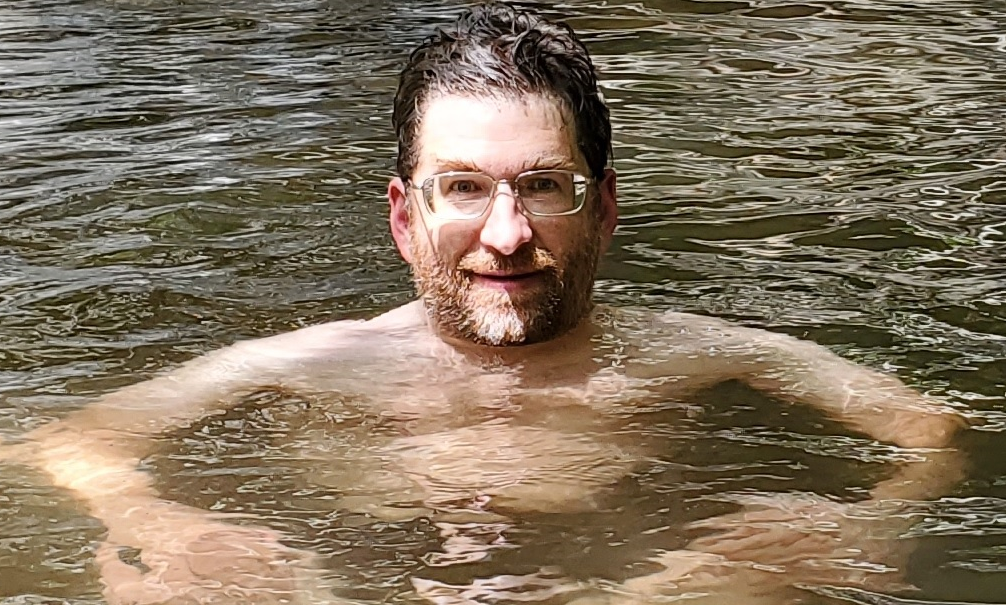
One of the themes I explored in my book, Gratitude in Life’s Trenches, is how we can reframe life’s struggles as opportunities and grow stronger as a result. In chapter 7 I reference a discussion about anxiety and courage from clinical psychologist Dr. Jordan Peterson. Dr. Peterson explained that when two groups of people experience a stressor, with one group voluntarily embracing the stressor as a challenge and the other group having the same stressor imposed involuntarily, the people in the former group typically use an entirely different psychophysiological system for dealing with the stress—the same system associated with challenge and adventure. By contrast, the group that had no choice about the struggle didn’t approach it as a challenge but used the psychophysiological system associated with defensiveness and withdrawal. Both groups in the study faced the same struggle, but the struggle was only productive in the group that approached it as a challenge and opportunity for growth. The simple act of approaching stressors as a challenge, as something that can be leveraged for good, can lead an individual to thrive and become more courageous.
Since most of us face hardships of varying kinds, we can leverage these findings for our benefit. By approaching unavoidable suffering as a challenge, an opportunity for growth, or a spiritual adventure, we can change the psychophysiological system we use for dealing with the ups and downs of life, resulting in greater resiliency and growth. In this way, we can reframe obstacles as opportunities and grow stronger as a result.
Now to be clear, not all struggle can be reframed in this way. For some types of hardship—for example, when we are exposed to trauma, abuse, danger, or injury—the best course of action is to do whatever it takes to flee. Not all struggle is created equal. Yet a lot of the normal struggles we face in everyday life are a missed opportunity for growth. As the stoics understood many centuries ago, all it takes is a different mindset.
The power of mindset was impressed on me a few years ago when I spent some time dabbling in cultural anthropology and learned that while Anglo-American cultures generally fostered a negative idea towards struggle, this was not the case in many East Asian societies. Cultures that have been strongly influenced by Confucianism have tended to emphasize human adaptability, and thus put more emphasis on changing oneself through struggle, including working through frustration, confusion, and failure towards optimal outcomes.
For example, research published in Educational Researcher found that, when confronted with a child’s poor achievement, Japanese mothers were more likely to put it down to “lack of effort,” whereas American mothers were more likely to put it down to “lack of ability.” American mothers were also more likely to blame conditions outside the students’ control, such as the school environment and other external factors.
In fact, many of the same behaviors that Americans regard as failing (for example, struggling for a long time over the same problem), the Japanese think of as learning. As I explained in my Touchstone article The Cross of Least Resistance,
To many Asians, the students who show they can persevere through repeated setbacks are the ones who are preparing themselves for great things later in life.
Wider research in cross-cultural psychology shows that these contrasting orientations towards educational struggle are rooted in the different ways Asians and Westerners perceive the development of character, intelligence, and skill. Most East Asians believe that these qualities result from what one researcher called “dull and determined effort” over long periods of time. But a majority of Westerners (particularly in the English-speaking nations) tend to view character, intelligence, and skill
More recently Dr. Andrew Huberman has done some intriguing work on the benefits of struggle, including the benefits that accrue from voluntarily putting ourselves in difficult situations, such as cold-water immersion and intermittent fasting. I recently learned about Dr. Huberman’s work from my friend Wallace, who was impressed by Dr. Huberman’s research showing that the holy grail of motivation and drive is learning to see effort and friction as reward. Indeed, by retraining ourselves to perceive strain as good, we can actually increase our baseline dopamine and live more rewarding lives as a result. (I’ve set the videos below to go straight to the sections where Dr. Huberman discusses this.)
Huberman’s work is primarily focused on performance optimization. But the basic principle applies in a variety of contexts. By understanding that struggle can be good for us, we can learn to see effort and friction as a type of reward.
For me, a key take-home from Dr. Huberman’s work is how to leverage the struggle of cold water immersion to raise baseline dopamine.
Of course, cold water immersion is all the rage now since being popularized by ice-warrior, Wim Hof. These popular forms of secular asceticism are rediscovering what the Church has always taught: that we become more human not by resisting struggle, but by leaning into it, and leveraging struggle as opportunities for growth. (Of course, it is sad that people are leveraging secular asceticism to merely improve their temporal lives, rather than also embracing the types of struggles that prepare us for eternity, but that is a topic I dealt with elsewhere here and here.)
A portion of this article previously appeared in my column at Salvo Magazine in the article, “What Does Social Science Say About Hardship?” and is reprinted here with permission.


